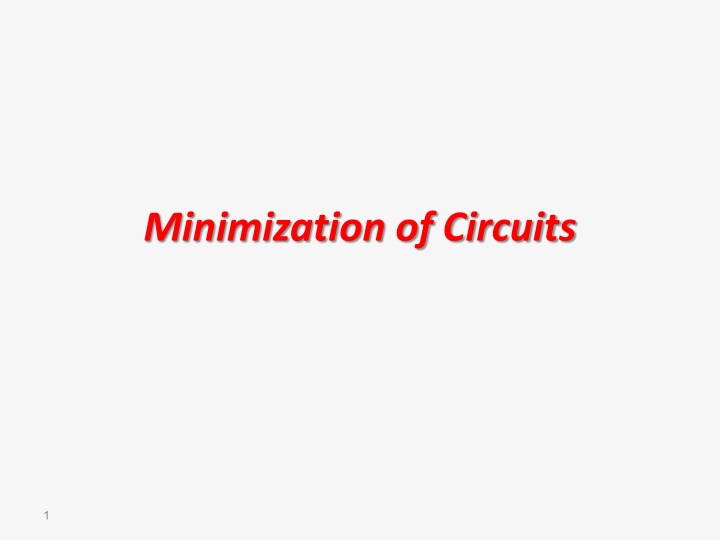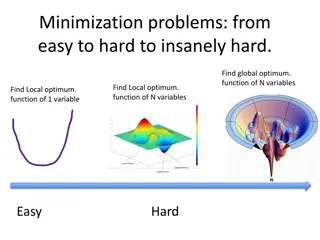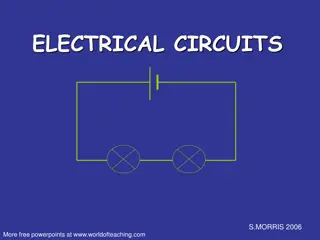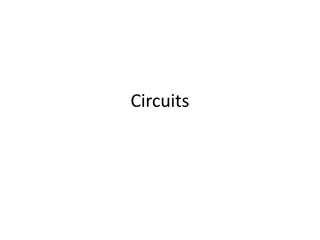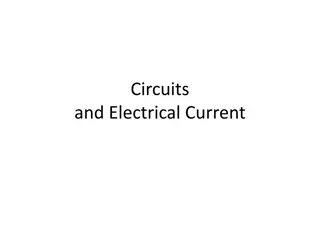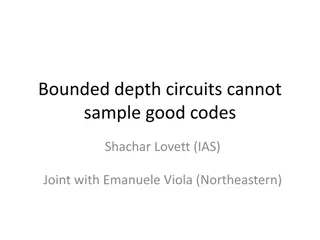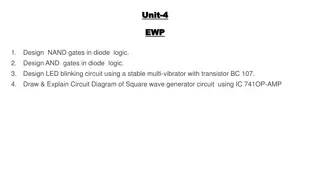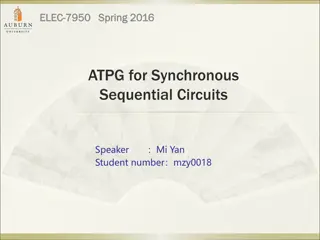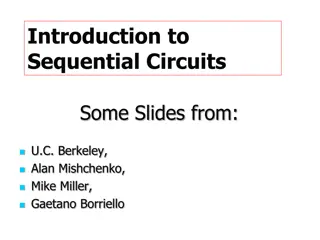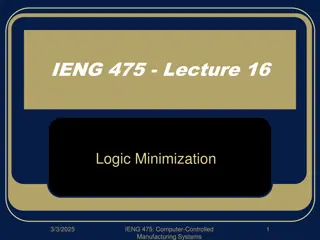Minimization of Circuits
This lesson introduces the concepts of minimizing circuits, Boolean functions, and Karnaugh Maps. Learn how to optimize logic gates and simplify Boolean expressions for efficient circuit design.
Download Presentation

Please find below an Image/Link to download the presentation.
The content on the website is provided AS IS for your information and personal use only. It may not be sold, licensed, or shared on other websites without obtaining consent from the author.If you encounter any issues during the download, it is possible that the publisher has removed the file from their server.
You are allowed to download the files provided on this website for personal or commercial use, subject to the condition that they are used lawfully. All files are the property of their respective owners.
The content on the website is provided AS IS for your information and personal use only. It may not be sold, licensed, or shared on other websites without obtaining consent from the author.
E N D
Presentation Transcript
The main purpose for this lesson is to introduce the following: How can use the sum-of-products expansion of a circuit to find a set of logic gates. Finding minimization of the Boolean function. Karnaugh Maps (K-map). 2
Introduction We can always use the sum-of-products expansion of a circuit to find a set of logic gates that will implement this circuit. The sum-of products expansion may contain many more terms than are necessary. Terms in a sum-of products expansion that differ in just one variable, so that in one term this variable occurs and in the other term the complement of this variable occurs, can be combined. 3
Example : consider the circuit that has output 1 if and only if x = y = z = 1 or x = z = 1 and y = 0. The sum-of-products expansion of this circuit is The two products in this expansion differ in exactly one variable, namely, y. They can be combined as Hence, x z is a Boolean expression with fewer operators that represents the circuit in Figure 1 . 4
The second circuit uses only one gate, whereas the first circuit uses three gates and an inverter. Finding such a sum of products is called minimization of the Boolean function. Minimizing a Boolean function makes it possible to construct a circuit for this function that uses the fewest gates and fewest inputs to the AND gates and OR gates in the circuit. 5
Karnaugh Maps (K-map) There are four possible minterms in the sum-of-products expansion of a Boolean function in the two variables x and y. A K-map for a Boolean function in these two variables consists of four cells, where a 1 is placed in the cell representing a minterm if this minterm is present in the expansion. 6
Cells are said to be adjacent if the minterms that they represent differ in exactly one literal. For instance, the cell representing ?y is adjacent to the cells representing xy and ? ?. The four cells and the terms that they represent are shown in Figure 2. 7
EXAMPLE 1 Find the K-maps for: 8
EXAMPLE 2 Simplify the sum-of-products expansions given in Example 1 . Solution: 10
K-map in three variables A K-map in three variables is a rectangle divided into eight cells. The cells represent the eight possible minterms in three variables. Two cells are said to be adjacent if the minterms that they represent differ in exactly one literal. One of the ways to form a K-map in three variables is shown in Figure 5(a). 11
K-map in three variables This K-map can be thought of as lying on a cylinder, as shown in Figure 5(b). On the cylinder, two cells have a common border if and only if they are adjacent. 12
Simplify a sum-of-products in 3 variables To simplify a sum-of-products expansion in three variables, we use the K-map to identify blocks of minterms that can be combined. Blocks of two adjacent cells represent pairs of minterms that can be combined into a product of two literals; 2 x 2 and 4 x 1 blocks of cells represent minterms that can be combined into a single literal; and the block of all eight cells represents a product of no literals, namely, the function 1 . 13
Simplify a sum-of-products in 3 variables 2 x 1 block 2 x 2 block 1 x 2 block 4 x 2 block 4 x 1 block 14
EXAMPLE 3 Use K-maps to minimize these sum-of-products expansions. 15
Solution: 16
K-map in 4 variables A K-map in four variables is a square that is divided into 16 cells. The cells represent the 16 possible minterms in four variables. One of the ways to form a K-map in four variables is shown in Figure 8. 17
Simplify a sum-of-products in 4 variables The simplification of a sum-of-products expansion in four variables is carried out by identifying those blocks of 2, 4, 8, or 1 6 cells that represent minterms that can be combined. 18
EXAMPLE 4 Use K-maps to simplify these sum-of-products expansions: 19
Solution: 20
Homework Page 841/842 1 (b) 2 (c) 3 (a,b,c) 5 (a,b) 7 (a,b). 23
